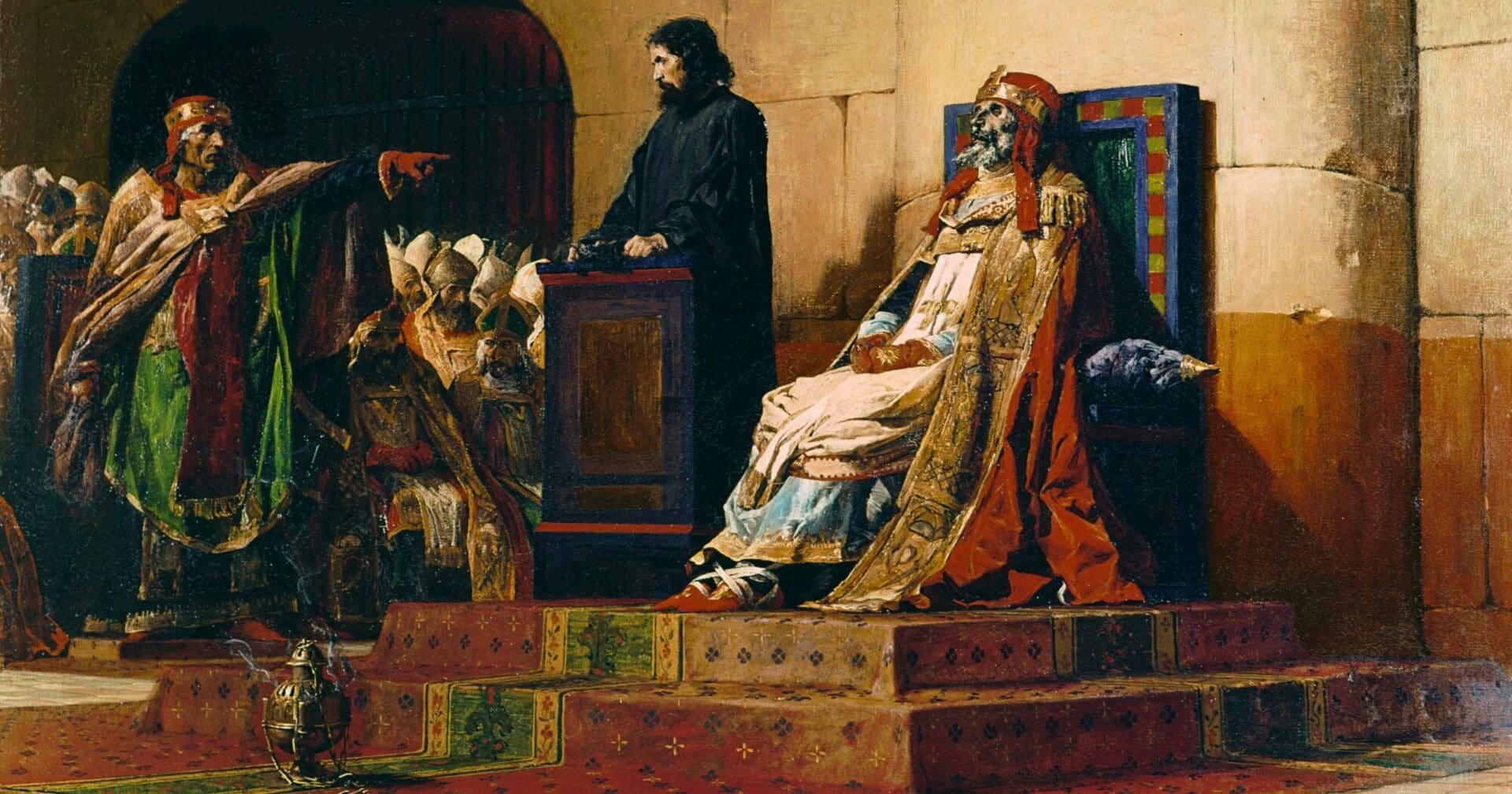Few institutions other than the Catholic Church are home to some of history’s greatest and most interesting tales. Quite possibly one of the most morbid of these stories from the early Church is the Cadaver Synod.
The Cadaver Synod, known in Latin as the Synodus Horrenda, was the posthumous ecclesiastical trial of Pope Formosus. Around January 987, Pope Stephen VI ordered that the corpse of his papal predecessor, Pope Formosus, be exhumed from his tomb and brought to the papal courts for trial. His corpse was propped up on a throne, and a deacon was appointed to be his deceased pontiff’s representative. Formal charges were brought against the corpse of Formosus for perjury, serving as Bishop while being a layman, and for abandoning his see as the Bishop of Porto.
After the trial, he was found guilty. His punishment included his corpse being stripped of papal vestments, cutting off the three fingers used to perform blessings, formally invalidating all of his acts, and making his papacy void and null. His body was buried in a graveyard for foreigners, but was dug up again for a second time, tied to weights, and cast into the Tiber River. Eventually, his body washed up on shore and was claimed by a group of nuns. Reports spread that the body of Formosus performed miracles on the shore, and public opinion further turned against Pope Stephen VI.
To understand the actions of Pope Stephen VI requires the context of the relationship between Pope Formosus and Pope John VIII. Formosus became the Bishop of Porto in 864 and carried out missionary work in Bulgaria. He was so successful that the Bulgarians requested him as their own bishop. However, the Second Council of Nicaea forbade bishops leaving their current see to lead over another. Formosus fled Rome, and Pope John VIII formally accused him of deserting his see in Porto and aspiring to the papacy. Formosus was then excommunicated along with this followers. After the death of Pope John VIII, Formosus resumed his see as Bishop of Porto; however, his crimes were not forgotten by Pope Stephen VI who wanted to bring him to justice.
After the Cadaver Synod, public opinion turned against Pope Stephen VI. He was deposed and imprisoned, and while serving his prison term was strangled in August of 987. Following his death, Pope Theodore II and John IX convened their own synods to null the Cadaver Synod and restore Formosus’ name. However, Pope Sergius III who served as a judge in the Cadaver Synod, overturned their rulings to reaffirm the conviction of Formosus and had an epitaph inscribed on Pope Stephen VI’s tomb to restore his name.
Photo credit: PD via Wikimedia Commons















That’s a very interesting TIL: Today I Learned.
Hey Ryan! Thanks for the interesting history lesson! I am a fellow Zip. I graduated in 2014 from The University of Akron. Have you checked out the Newman group at Akron? They call themselves RooCatholic now. They meet beside St. Barnard’s Catholic Church just off campus. If not, I highly recommend you check them out! It is so cool that a blogger like yourself is so active! And on uCatholic nonetheless! Best of luck in your endeavors!
This is really a nice thought to know as a Catholic via a vis all Christians. And I am grateful to know that the Church continues to reform its Organs. Thanks so much for the knowledge.
This is really a nice thought to know as a Catholic vis a vis all Christians. And I am grateful to know that the Church continues to reform its Organs. Thanks so much for the knowledge.
Wow. The church really has alot of history to tell.
THANK you -uCatholic so good to read all your information on the Catholic Church
Have you read St Robert Bellarmine’s defense of the 40 popes falsely accused by heretics as fallible?
You may read it in case you have not yet done so and get it via Mediatrix Press in English
Papal Error?
St Robert Bellarmine’s writings were used by Vatican I in order to define Papal Infallibility and he is a doctor of the Church.
In JMJ
BC
Jesus said, The gates of Hell will not prevail against His Church. He did not say there never would be those within it who may go to hell for trying to bring it down. St. John Chrysostom taught that the floor of Hell is paved with the skulls of bishops and priests who mislead the flock. Why we should pray extra for our priests!!
When Formosus was put on trial, is this the reason behind the burning of frankincense and myrrh? The stink??